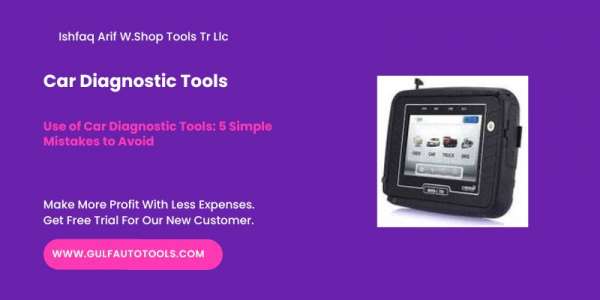
Have a Question? :
+971 55 7841839
Login / Register

30 Oct, 2023, 16:44 PM

When the 'Check Engine' light on your dashboard starts to blink, it's time to visit the mechanic. It might also be discouraging to learn that the fuel cap was loose when the light first appeared and that you could have simply corrected it. Before we make the trip to the repair centre, life would be a lot simpler if we could figure out exactly what is wrong with the automobile.
OBD scanners or Professional Car Diagnostic Tool is used by auto technicians to identify issues with your vehicle. These are instruments that fit into your car's OBD port and read the data there. To pinpoint the precise problem, whether it be an engine misfire, loose wiring, or a change in oxygen, this data is evaluated.
However, to get the most out of these tools and ensure an accurate diagnosis, it's crucial to avoid a few common mistakes. Continue reading to know the five mistakes to avoid.
Failure to read and comprehend the user handbook before utilising a Professional Car Diagnostic Tool is one of the worst mistakes you can make. These manuals offer thorough information on how to operate the instrument. Irregular outcomes and misunderstandings might occur from skipping this step. To prevent making this error, spend some time getting acquainted with the instructions for your diagnostic equipment.
With the continual introduction of new car models and upgraded technology, the automobile industry is always developing. Software upgrades are often necessary for diagnostic instruments to remain compatible with these modifications. If you don't update your tool, it will not be able to interface with the newest cars or give inaccurate information. Regularly checking for and installing any required software updates is crucial.
Not all automotive diagnostic tools are made equal. While some are more adaptable, some are made for particular makes and models. Diagnostics may be erroneous or lacking if a tool is used that is incompatible with your car. To avoid this common mistake, make sure your tool is compatible with the make and model of your automobile before attempting to diagnose any problems.
Live data streams, which deliver real-time information regarding numerous sensors and components in your vehicle, are offered by many diagnostic tools. It would be a mistake to ignore this function since you can identify problems, particularly sporadic ones, by tracking data variations while the car is running.
DTCs, or diagnostic trouble codes, are alphanumeric characters that identify a systemic issue with your car. It is frequently made to misinterpret these codes. They don't provide exact solutions, but they do offer a starting point for problem-solving. It's important to understand the significance of each code and use it as a jumping off point for further study rather than immediately replacing components or carrying out expensive repairs.
Car diagnostic tools may be quite helpful to vehicle owners, but how well they work depends on how they are used. By avoiding these five common mistakes, you can ensure that your diagnostics are accurate and that you're on the right course to addressing any issues with your automobile. Never clear codes too quickly, remember to read the user manual, update your program and check for compatibility.
You'll get the most out of your diagnostic tools and maintain the performance of your car if you keep these safety precautions in mind.